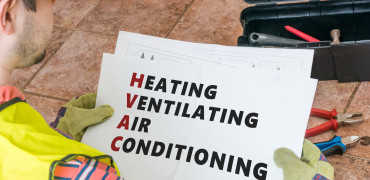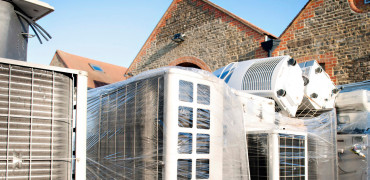Although I have been training air conditioning engineers for many years now, I actually started off in this industry working on Chillers.
I therefore gained my basic knowledge of heating and cooling loads within buildings and the technical expertise to help solve these challenges, working on a different technology to what I now spend my days training engineers on.
For many years I have been extolling the virtues of VRF air conditioning over the ‘traditional’ method of a Chiller and boiler combination and pointing to the flexibility and energy savings that VRF can offer.
I still stand by that but Chillers do still have a significant place in the market as seen by the healthy sales for this technology. My company has also recently become involved in the Chiller sector, following the purchase of Climaventa and the RC Group brands.
Given my background and what I do now, this has given me pause for thought.
Change is coming to both Chillers and air conditioning systems
Mindshift
As a business, we are moving into this sector so that we are able to offer any solution to our customers and help them achieve the most sensible and energy efficient system for their building, whatever their budget, requirement, or need.
For anyone who has only known Aircon though, this does require a slight mindshift in their approach to their customers and I think this provides a salutatory lesson on the value of keeping up to speed with the changes in the market.
RAC, PAC and VRF air conditioning has come on in leaps and bounds since the early days of fixed-speed, cooling-only units and they seriously are one of the most efficient and economic ways to heat and or cool a room or a building.
However, they are not the only solution and although Chillers will be facing change of their own next year when we start to see the impact of the EcoDesign Directive and Lot 21, along with the impact of MEES (Minimum Energy Efficiency Standards), these big beasts of the HVAC world do still provide a reliable solution to many situations.
What we will also start to see are more Chillers joining our own e-Series modular Chiller range utilising advances taken from the VRF sector, such as inverter-drives and changes in component design. This not only has the potential to significantly increase the performance of Chillers, it can also significantly reduce the size needed for plant.
Next year also looks like it could be change all round as for the Aircon sector we will start to see the further impact of the F-Gas Regulations and the phase down of refrigerants with a high global warming (GWP) potential.
F-Gas is starting to place serious pressure on the whole HVAC sector because of the urgent need for us all to tackle the effects of global warming and climate change.
At the same time, modern buildings are requiring air conditioning as standard now as they become more airtight and full of heat-generating technologies, such as computers, TV’s, photocopiers, etc.
What this means for the RAC, PAC and VRF market is that unless we transition quickly to lower GWP refrigerants such as R32, we may well run out of existing refrigerant or the inflated price rises for gases such as R410A may well price these products out of more projects.
It is therefore important for everyone currently involved in the ‘traditional’ world of RAC, PAC and VRF to understand this because it will affect the amount of R410A that can be imported into Europe – including the number of units containing R410A.
One answer for Aircon is R32 units which are growing in sales month by month and this will likely help sales of both RAC and PAC models and keep the engineers I train busy for the foreseeable future.
Another answer could be in looking at the value in training on alternatives such as Chillers. As mentioned, we will be seeing change here as well in the coming years as we move away from fixed-speed systems to inverter-driven, modular Chillers that deliver significant improvements in performance and carbon reduction, as well as potentially reducing the size needed for plant.
The beauty of this approach is that actually, it doesn’t have to be one or the other, it can be a combination of both which can also reduce the size of equipment needed all round.
We’re also seeing more air conditioning units used to pre-heat air handling units and being installed alongside this technology as well.
So there is a bright future for air conditioning engineers and plenty of scope to utilise their F-Gas skills beyond the immediate RAC, PAC and VRF sector.
Ben Bartle Ross is a Technical Trainer at Mitsubishi Electric and also writes this column for ACR Journal magazine.

